#BeaconTechnology
Explore tagged Tumblr posts
Text
Bluetooth Beacon and iBeacon Market Drivers Fueling Growth Across Retail and Smart Industries
The bluetooth Beacon and iBeacon market has seen rapid expansion in recent years, driven by increasing adoption across various industries aiming to enhance user experiences, streamline operations, and leverage the power of proximity-based communication. These beacons, which utilize Bluetooth Low Energy (BLE) technology, transmit small data packets to nearby smart devices, enabling precise indoor navigation, personalized marketing, asset tracking, and more. As industries pursue digital transformation and smarter environments, several drivers are propelling the growth of this market.
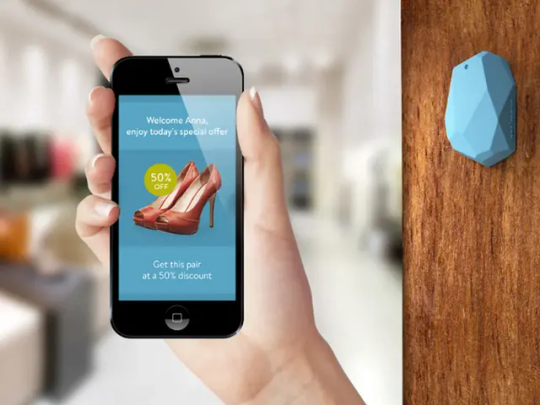
1. Surge in Demand for Proximity Marketing
One of the strongest drivers in the Bluetooth Beacon and iBeacon market is the growing popularity of proximity marketing. Retailers, shopping malls, and supermarkets are increasingly deploying beacons to send tailored promotions, product information, and loyalty offers directly to customers’ smartphones based on their location within a store. This highly targeted marketing approach improves customer engagement, enhances shopping experiences, and boosts sales conversions. As consumers expect more personalized interactions, the demand for beacon-enabled solutions continues to rise.
2. Rapid Growth of Smart Retail and Digitalization
The retail industry has become a central hub for beacon deployment. Bluetooth beacons and iBeacons allow retailers to analyze in-store customer movement, optimize product placement, and measure foot traffic. With the digital transformation of brick-and-mortar stores, beacons play a crucial role in bridging offline and online shopping behaviors. The smart retail trend, supported by AI and IoT integrations, amplifies the role of beacons in creating immersive, data-driven retail environments.
3. Expanding Applications in Healthcare and Hospitality
Beyond retail, the healthcare sector is increasingly turning to Bluetooth beacons for patient tracking, staff management, and real-time asset monitoring. Hospitals and clinics benefit from improved workflow efficiency and enhanced patient safety by using beacon-based location services. In hospitality, hotels use iBeacons for smooth check-in processes, indoor navigation, and personalized guest services. These practical applications are key contributors to the expansion of the Bluetooth Beacon and iBeacon market.
4. Integration with IoT and Smart Building Technologies
The rise of smart buildings and IoT ecosystems is a significant market driver. Beacons serve as essential components in connected environments, enabling location awareness and automation of services. In offices and smart campuses, beacons support employee tracking, room bookings, and automated lighting and climate controls based on occupancy. As more buildings adopt smart technologies, the integration of beacon-based systems becomes a natural extension for enhancing operational intelligence.
5. Increasing Adoption in Transportation and Logistics
The transportation and logistics sector also contributes to the beacon market's momentum. Beacons are used for vehicle tracking, passenger information systems, and indoor navigation in airports and stations. Logistics companies utilize Bluetooth beacons for inventory management, asset tracking, and supply chain optimization. These applications improve visibility, reduce errors, and increase efficiency, making beacon technology a valuable investment in a competitive industry.
6. Advancements in BLE Technology
Technological improvements in Bluetooth Low Energy (BLE) are also propelling the market forward. BLE offers low power consumption and reliable connectivity, making beacons more cost-effective and efficient. Enhanced battery life, improved signal stability, and miniaturization of hardware make modern beacons easier to deploy and maintain. These advancements widen the scope of applications and attract more sectors to adopt beacon-based solutions.
7. Support from Government Initiatives and Smart City Projects
Governments worldwide are supporting smart city initiatives, which often include digital infrastructure upgrades such as beacon deployments. Public transportation systems, museums, parks, and tourist attractions are using Bluetooth beacons to provide location-specific content and real-time updates to citizens and visitors. These initiatives not only improve public service delivery but also stimulate demand for beacon technologies across urban environments.
8. Growing Use in Tourism and Museums
The tourism and cultural heritage sectors leverage beacons to enrich visitor experiences through interactive tours, guided navigation, and multilingual content delivery. Museums use iBeacons to trigger audio guides or exhibit details as visitors move through galleries. These engaging applications promote educational and immersive experiences, encouraging wider adoption in the tourism domain.
Conclusion
The Bluetooth Beacon and iBeacon market is driven by a convergence of factors—from retail innovation and smart city development to BLE advancements and rising demand for real-time, personalized services. As industries continue to digitize and seek smarter solutions, the role of beacon technology is expected to grow, making it a critical component in the future of connected environments.
0 notes
Text
Beacon Technology Simplified for 2025 and beyond

Beacon Technology is revolutionizing location-based services, enhancing customer engagement, and optimizing business operations. As we move into 2025 and beyond, this guide simplifies how beacons work, their key applications, and how businesses can leverage them for improved marketing, navigation, and personalized user experiences.
#beacontechnology#ibeaconappdevelopmentcompany#mobileappdevelopmentcompanyinUSA#mobileappdevelopment#appdevelopmentinUSA
0 notes
Text
"A Bright Future: The Beacon Market from 2024 to 2033"
Beacon Market : Beacon technology is transforming the way businesses interact with customers by creating hyper-personalized, location-based experiences. These small, Bluetooth-enabled devices transmit signals to nearby smartphones, triggering instant notifications, navigation aids, or special offers. From retail stores delivering exclusive discounts to airports offering real-time boarding updates, beacons are enhancing user engagement like never before. As industries like healthcare, logistics, and smart cities embrace this tech, beacons are becoming essential for improving operational efficiency and enhancing the customer journey.
To Request Sample Report : https://www.globalinsightservices.com/request-sample/?id=GIS25036 &utm_source=SnehaPatil&utm_medium=Article
Looking forward, the beacon market is set to grow rapidly with advancements in Bluetooth 5.0 and AI-driven analytics. Innovations such as proximity marketing, contactless payments, and indoor wayfinding are opening new possibilities in sectors ranging from museums to stadiums. With businesses increasingly focusing on data-driven insights, beacons enable precise tracking of customer behavior, helping organizations optimize their services in real time. As IoT adoption accelerates, the integration of beacons with smart ecosystems will pave the way for seamless interactions, marking the dawn of smarter spaces and connected experiences
Relevant Link : https://linkewire.com/2024/10/24/sic-wafer-reclaim-services-market-opportunities-and-forecast-2024-2033/
#BeaconTechnology #IoTInnovation #BluetoothBeacons #ProximityMarketing #SmartCities #RetailTech #HyperPersonalization #IndoorNavigation #ConnectedExperiences #BeaconTrends #Bluetooth5 #DataDrivenInsights #SmartSpaces #NextGenMarketing #TechForFuture
0 notes
Text
Unlocking the Potential of Beacon Technology Unlock the potential of beacon technology with IPERA.AI! 🔍 Explore how beacons reshape experiences and drive engagement. From proximity marketing to indoor navigation, discover the possibilities. Dive in! #BeaconTechnology #Engagement #IPERA.AI
0 notes
Photo

Have a look at the Top Mobile App Development Trends that will rule the year 2020, and will help in making your app stand out in the app store. www.siddhiinfosoft.com
#mobileapp#mobileapps#mobileapptrends2020#apptrends2020#mobileapps2020#apps2020#iot#cloudbasedmobileapps#mobileappdevelopmenttrends2020#apps#mobileappdevelopmenttrends#appdevelopment#appdevelopmenttrends2020#Artificialintelligence#beacontechnology#ondemandapps#iotapp#instantapps#agumentedreality#virtualreality#mobilewallets
1 note
·
View note
Text
How Beacon Technology is Driving Innovation?

Due to the rise of beacon technology and shopping applications, businesses seek fresh approaches to draw in new audiences and keep their present clientele. Beacons are tiny gadgets that continuously send signals while gathering client information. Beacon technology initiates and distributes proximity campaigns to users' mobile devices, enabling company owners to gather data on consumer activity and foster interaction between clients and establishments. Beacon technology has significantly progressed in giving people a more tailored shopping experience. Retailers and customers may connect thanks to beacon technology.
Imagine that a text message notifying you of the promotional deals and discounts is delivered to your smartphone as you enter a store. Without a doubt, there is a lot more. Beacon technology solutions are affordable, making it accessible to small establishments that can still enjoy its many benefits.
How Beacon Technology Impacts Different Industries?
RETAIL
Retail and in-store marketing is used by merchants thanks to the development of shopping applications and beacon technology. Because beacons are centered on client location, businesses may deliver timely, relevant messages to customers that are individualized and relevant to them. For instance, greeting new consumers to your store by push notifications as they enter a mall may improve walk-ins and assist retail enterprises in making more money.
Beacon solution in retail enables companies to learn useful information about their customers. Mobile applications can use beacon technology to listen to Bluetooth signals from beacon devices. Retail beacons collect information on what customers buy, how long they spend in your shop, and what products they buy. Businesses may obtain the necessary information to create effective marketing plans and improve in-store modifications to provide customers with a wonderful shopping experience.
The customer experience may be enhanced by developing a loyalty program focused on mobile devices. Retailers are implementing loyalty programs that reward customers for in-store actions to keep them returning. Briefly said beacon technology transforms how businesses sell their goods online and offline. It is a clever strategy to get clients' attention and enhance their interactions with your goods and services.
Beacon technology can assist retail shop owners in tracking personnel activity in and around the store and monitoring client behavior. Knowing when their employees enter the building and when they depart makes it simple for managers and retail owners. They can monitor how much time employees spend working in the store. Beacons may also notify staff members when a job has to be completed. Beacon solution can be useful even if you only need a few items refilled.
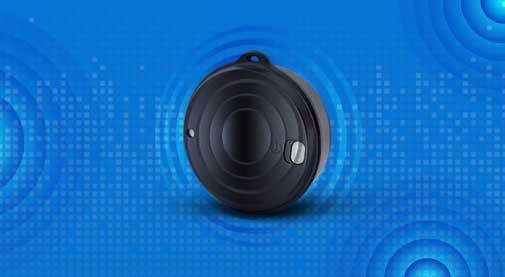
HEALTHCARE
Beacon technology is frequently used in the healthcare industry to detect physical activity and track different fitness and health-related metrics. Our daily lives now include mobile health inextricably. Beacons may gather data in real time and offer insights to assess well-being. The use of location-based technology is growing in popularity in the healthcare sector. Beacons can modify the health information according to the choices of the healthcare practitioner or the patient's health information.
The use of beacon technology can help hospitals and clinics run more efficiently. The internal operations at clinics and healthcare facilities can be automated thanks to contemporary technologies. A hospital's employees can be informed of any crises and other responsibilities.
TRAVEL & TOURISM
Beacon technology has the hyper-local capabilities to give tourists and service providers in the tourism sector an immersive experience. Travelers may navigate airports, take virtual city tours, explore new cities, and much more with the help of wearables and beacon devices. Beacons provide several chances to target users with tailored experiences to contribute to company success since they may source consumer data and behaviors in real time. For instance, using messages to consumers nearby, restaurants, motels, and food establishments can employ beacon technology to schedule unbooked appointments. Sending notifications via their mobile phones can draw in a broader audience and help the company grow.
IoT technology may be used by tourism businesses and destinations to provide users with location-specific information that will improve their travel experiences. Sending travelers the appropriate signals can help them plan their travels more easily. To lessen the possibility of alienation, tourists can also be informed about the history or culture of the location they are visiting, weather updates, and other pertinent alerts.
Beacons bring enjoyable and useful components to the travel and tourism sector, resulting in wholesome travel experiences. Most medium-sized and large-sized businesses have begun to see the potential of iBeacon technology and have already begun utilizing it to improve customers' travel experiences.
EDUCATION
Schools and other educational institutions may employ beacon solutions to provide students with enhanced learning areas. Staff and students can independently tour the campus using interactive maps. Parents and students can tour the campus without visiting the school or institution. Beacons can be utilized to deliver students' specific content to enhance their learning and growth. A beacon-enabled scheduling system can be implemented in schools, colleges, and universities to improve teacher-student communication.
Teachers can record attendance by allowing the kids to check in at the activities automatically. The days when students found lectures dull are long gone. The goal of schools and universities across the world is to make learning dynamic and enjoyable for both students and professors. Beacons improve the pupils' educational experience.
By giving students quick access to library books, beacons are a very effective management tool. The pupils can discover the necessary books they're looking for with the aid of beacons. They may sign up to receive notifications about the availability of books in the library, reminders for book renewals, and other helpful information.
Most colleges hold various events and seek creative and distinctive ways to inform the students about the programs and activities. To ensure that the kids get all the announcements and future events, beacons can be utilized to deliver push alerts to them during the event.
REAL ESTATE
Several major players in the real estate industry utilize iBeacon technology to promote their listings, engage with prospective buyers, and streamline the purchasing process. Beacon technology provides real estate agents fantastic options to draw potential buyers, whether they want to draw a sizable crowd to an open house or provide a 360-degree perspective of how the property appears. It allows real estate salespeople to interact with users and increase sales.
Beacons can be placed at the property's entryway to invite guests to sign up via an app. When a potential customer tours your home, you want to leave a good impression. Additionally, you may send welcome letters and instructive pamphlets to potential customers. Users interested in purchasing your homes may also be given guided property tours.
DIGITAL ADVERTISING
The correct targeted audience for the advertisements is a challenge for many advertisers. They search for novel approaches to ensure that the advertisements speak to clients in a tailored way. Location-based beacons can be useful in this situation. To entice customers to act, businesses might advertise the newest deals and holiday discounts. The conversion rate will increase if there is a sense of urgency.
Brands have a variety of chances to target customers and boost sales thanks to beacon technology. Both small and large businesses benefit over the long run from iBeacon digital signage systems. Beacons installed within your business improve customer service and boost foot traffic.
Wrap Up
It's time for you to adopt this cutting-edge technology and provide your users a richer experience as beacons continue to gain traction in a variety of industries. Join the Beacon solution development revolution now and transform your company!
Beacons make location-based interactions and seamless connectivity possible. In this blog, learn about the revolutionary effects of beacon technology.
#BeaconTechnology#Innovation#RetailTech#PersonalizedShopping#CustomerExperience#LoyaltyProgram#HealthcareTech#DigitalHealth
0 notes
Text
7 Innovative ideas: Why Retailers Are Using Beacon Technology?
The time is here, as you don’t have to wait for a sales executive anymore and can take out your phone to let the app of the relevant guide you through the aisle to your favorite item with Beacon Technology. Many big companies, including Macy’s, Urban Outfitters, CVS, Lord and Taylor, Target, and timberland, have already implemented this technology in their stores.
For More Info: https://deorwine.com/blog/beacon-technology/
#beacon technology#marketing beacon technology#beacon technology company#beacon technology advertising#beacontechnology marketing#target beacon technology
0 notes
Text
What is beacons?
Technology enables us to interact with various activities each day without even questioning. I.e., when turning on a car, through flipping on a switch to turn on light bulbs, and when a Wi-Fi signal promptly enables internet browsing. These simple things become connected through a technology called Bluetooth Beacons. In this article, we will discuss the basis of beacons and beacon technology, what beacons are used for, how to make a beacon structure, how they differ from Geo-fencing, and how they can be used concurrently with mobile apps.
What is beacon?
A Beacon is a small device comprising insignificant amounts of data that often transmit radio signals to nearby smart phones and tablets. The time between each movement sent and the signal strength is configured to draw the wanted coverage. Mobile apps are used to snoop the signals broadcast, where they trigger an action on the phone anytime they hear a relevant alert. Beacons can only disclose information to the phone but cannot read; hence they operate in one direction. Most of the data transmitted through current beacons does not change frequency as it is usually hard coded. Once it is set when configuring, it relies on a device that listens to do something intelligent with the information. With the advancements in technology, this is likely to change in the future.
How far do beacons reach?
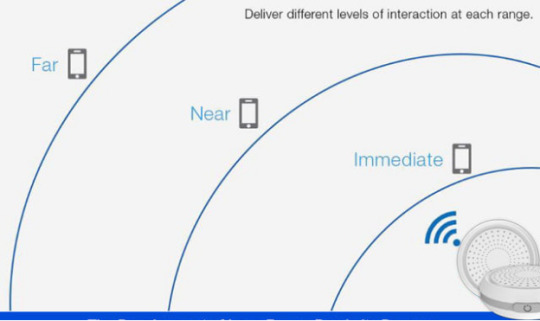
Though Beacons can have up to a range of 70m without any obstructions, walls made of bricks and metals can drop the coverage significantly. Thin stud walls have fewer minor effects. Most beacon portal operates with three distance ranges in which the device does different things with each range. They include;
· Far range distances – They are specially made such that your device can do something when close to hear a beacon, i.e., after walking past a retail shop.
· Near range distances – They are designed to operate when the device is in the same room with the beacon, i.e., walking into a retail shop.
· Immediate range distances– They are made to function once the device is almost close to touching a beacon, i.e., touching the point of sale in a retail shop.
Beacon packet
A beacon packet is the continuous transmission of signals in a beacon network that advertises the base station's presence. It persistently signals any fault condition in a nominal ring network such as FDDI. A beacon packet enables network administrators to pinpoint any faulty node in the system.

Beacon frame
It is a management frame category that detects a basic service set (BSS) designed by several 802.11 devices. A beacon frame comprises network data required by a station before transmitting a frame. Beacon frames are used to synchronize devices and announce the existence of devices in a WLAN connection.
As beacon frames are part of the basic service set, they are also wireless router access points that form the base stations for access. Communication through devices occurs with each other through access points where the beacon frames are periodically transmitted. This enables the devices connected to identify the position of the network channel. Independent basic service sets communicate to other devices based on peer-to-peer, allowing the beacon generation to be distributed among the connected devices effectively. It consists of the body, the IEEE 802.11 MAC header, and a Frame check sequence.
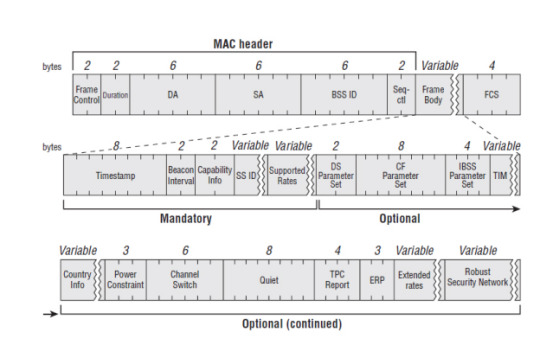
The body of a beacon frame has other vital fields, which include;
· Timestamp − It is the period with which a frame is directly associated with the beacon portal. A timestamp synchronizes a device while in the WLAN connection. It also helps the device to update its local clocks.
· Beacon interval – It is the time recess amid two repeated transmissions.
· Capability information − It comprises all data regarding the ability of the network. The capability information determines if the network used is ad hoc or infrastructure-based.
· SSID – It identifies the service set for networks.
· Supported rates − It expresses the speed of transmission acceptable by the channel.
· Frequency-hopping Limit Set
· Direct-Sequence Limit Set
· Contention-Free Limit Set
· Traffic indication map − It is an electronic image used in IEEE 802.11. A traffic indication map is periodically sent by the access point where it must pay attention to at least one beacon all through the beacon interval.
Types of Beacon protocols
a) Apple Beacon
Apple announced its first beacon protocol, iBeacon, in December 2013. It works with Google's Android and also Apple's iOS. This beacon uses the iBeacon protocol to transmits UUID that has a string of 24 numbers. The UUID communicates with a Mobile App installed.
Pros:
1. Broadly supported
2. Implementing Apple Beacon is easy and simple
3. Consistent performance while working on iOS.
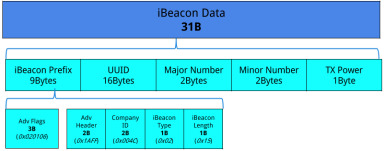
b) Eddystone (Google)
Eddystone was announced in the market by Google in July 2015. Initially, Eddystone was known as Uri Beacon. Beacons that Eddystone supports are specially made such that they can transmit three different frame-types. Eddy stone perfectly functions with both Apple's iOS and Google's Android. A single beacon has enough strength that can send all three Google Eddystone's frame types. The three frame types of Google's Eddystone are:
1. URL - It is a website link transmitted to the device, eliminating the mounted Mobile App's prerequisite.
2. UID – It is similar to Apple's UUID, but UID has a string of 16 numbers that identifies an individual beacon. A UID can efficiently activate an installed Mobile App.
3. TLM – This beacon frame type communicates administrative and sensor data through telemetry.
Pros:
1. It sends out an URL that removes the need for telemetry information and installed mobile apps.
2. Flexible to open and format.
3. Can easily integrate with Google Products.
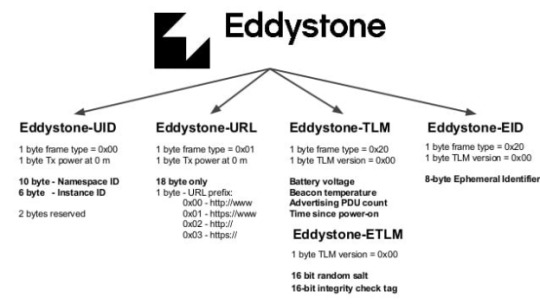
c) AltBeacon
AltBeacon was introduced into the market by Radius Networks in July 2014. The main aim of announcing this open-source beacon protocol was to help overcome the protocols that favor one vendor.
Pros:
1. AltBeacon is an open-source beacon protocol.
2. It is compatible with other mobile operating platforms
3. It is more flexible when using a customizable source code.
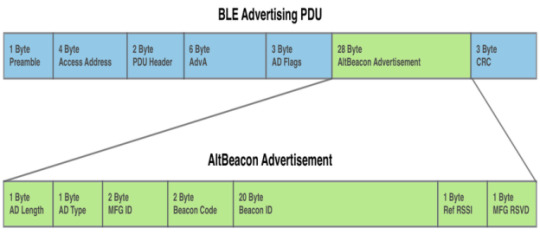
d) Geo-Beacon
GeoBeacon was announced into the market by Tecno-World in July 2017. Due to its compact type of data storage, the GeoBeacon open-source beacon protocol is specially designed for Geocaching applications.
Advantages:
1. This beacon protocol is open-source.
2. It is compatible with other mobile operational platforms.
3. Its coordinates are of high resolution.
4. It uses 8 bytes of user data.
Types of power solutions
Power solutions are of 3 types. They are;
1. Battery-powered beacons that use AAA, AA batteries or coin cell batteries.
2. Electricity plug-powered beacons.
3. USB-powered beacons.
Types of location technology
Most beacons apply Ble Beacon technology solutions to effectively communicate with other devices, which is effective as it retrieves the data location. However, besides Bluetooth technology, other location technologies exist in the market. They include;
a) Bluetooth low energy (Ble Beacon technology solutions)
Most beacon location technology relies on Bluetooth low energy technology. Compared with the classic Bluetooth technology, the BLE technology has a lower range, consumes less power, and transmits less data. The Bluetooth low-energy technology is specially designed for sporadic transmissions of minimal amounts of data.
b) Wi-Fi Aware
The Wi-Fi Alliance announced Wi-Fi Aware in July 2015. It is specially made for indoor locations. The rate of power consumption of Wi-Fi Aware is lower in comparison to regular Wi-Fi.
c) Combined technologies
Rather than focusing on merely one beacon technology, most vendors combine several location technologies.
How Do Beacons Work?
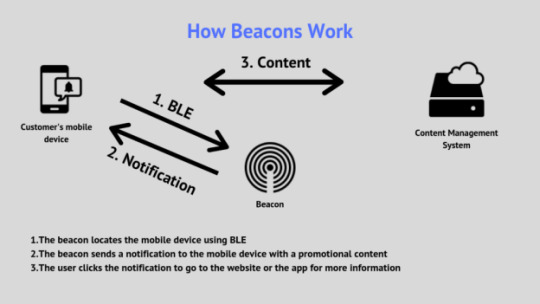
Any signal transmitted by a Beacon has a unique identification number that enables the data Centre (Content Management System) to fathom which device’s content needs to be pushed. These applications on beacon technology are developed so that they suit the requirements of the business.
Beacons are responsible for pushing all the content found on the CMS to the mobile devices by beacons, allowing change of content at any particular time. This is because data is stored in the cloud and not in the application. iBeacon, a protocol developed by Apple, is used to communicate, making it possible to transmit small amounts of data. Also, Google has developed Eddystone, which is an alternative to iBeacon.
Communication in these devices happens through Bluetooth Low Energy, a power-efficient disparity of the Standard wireless Bluetooth. The BLE technology enables beacons to work for almost 24 months using a coin cell battery. Most modern portable devices such as smart watches, smartphones, and tablets are installed with BLE chips.
The mobile phone is the last element in this chain. It receives contents in the form of notifications from the beacon. Customers are always directed into the seller’s application whenever they click on it. In case the device has no application installed, the customer can use the web to view the content.
Beacons Communication Mode
For effective communication, beacons use the Consultative Committee for Space Data Systems (CCSDS). The (CCSDS) telecommunications service is also used in the uncommunicated spacecraft through the deep space network. It is mainly designed to transmit the spacecraft's telecommunications status and its health information. It uses a simple signal that is easily detectable with a moderately-sized projection. Also, the beacon mode permits spacecraft to link with each other daily, letting one spacecraft to performance as an information proxy for the other.
The CW tone is transmitted using the CCSDS tone beacon mode that configures the transceiver. Besides, it is used as an indicator for other spacecraft when transferring data to an artificial satellite. However, its crucial role is to convey the health information of spacecraft. While using the four exceptional CW frequencies with 16 probable tones, it can address multiple spacecraft. UHF frequencies cannot be used in the outer solar system, but instead, the required technique is transmitted through a programmed backup transmitter. Outside the beacon mode service, spacecraft can retort to any transmit configurations that are compatible within force artificial satellites.
What data do beacons send to phones?
Beacons never convey any significant data. Alternatively, they convey short identifiers where the mobile app makes good use of the data sent and does something useful. For instance, the mobile app detects a broadcast of short numbers using a beacon, then converts the numbers into messages after connecting to the internet. Later, it triggers a push note to the receiver. With no internet, beacons can also send push notes but only of those with short characters. In short, beacons are replica devices that publicize temporary identifiers.
Theoretically speaking, beacons transmit an insignificant amount of customizable data and less data comprising a unique identifier. The identifier notifies the mobile app to twitch listening and does something that gives extra information for processing. The identifier is made of three parts; a "UUID," which is the identification document of the beacon vendor, and a "Minor" and "Major" identification documents, which are made to indicate different regions. All the data transmitted is unencrypted in a broad publicized format. This ensures there is standardization between platforms and manufacturers. To ensure that there is nothing sensitive transmitted over BLE, mobile apps should first understand this feature.
Can beacon work without an app?
An app must be configured to a particular beacon, although some transmission modes are specific to certain manufacturers. All beacons convey data using the same setup; hence they are interchangeable. For the mobile app to respond as planned, it must identify the beacon it is listening to; every beacon manufacturer has a set of tools available to assist in this process.
What can I track with beacons?
With the evolution of the Bluetooth Low Energy beacon technology, new and innovative ideas have been set by service contractors. This influences the aptitude to track people and assets at service locations and in workplaces. Beacons are used in numerous diverse surroundings in which security workers and janitorial operate. Some of the items trackable by beacons are;
· Roaming of mobile devices.
· Proximity detection of roaming assets.
· Fixed BLE receivers tracking
· Piggy-backing off the location of a mobile device.
· Augmenting a BLE solution with GPS, Geo-fencing, or Wi-Fi
· Tracking requests for things like payments
Timeline of Beacon technology
As it is now clear on what beacon technology entails and how it works, next, we will cover when the beacon technology was first technologically advanced and how it has been adopted worldwide.
On June 10, 2013: - During the Worldwide Developer Conference, Apple introduced iBeacon as part of iOS 7.
From September 1 to November 10, 2013: - Titan mounted 500 beacons in Manhattan telephone booths for maintenance.
On December 6, 2013: - Apple installed 254 beacons in their United States shops hence providing clients with in-store notices about deals, stuff, and product reviews.
On July 31, 2014: - More than 50 of the leading 100 United States stores examine beacons in their shops.
On August 12, 2014: - 3 UK retail shops test beacon technology in their dummies to provide prices and links to clients' online purchases when they cross the threshold of the beacon's 50-meter range. By then, clients had to download a mobile app to attain the beacon's data. Also, customers were tracked on how long they spent searching for an item and their purchase method to form a more precise and custom-made marketing strategy.
On September 29, 2014: - The single most significant bacon technology bid in retail to date happened when over 4,000 devices were installed in their shops.
On November 21, 2014: - The blue-dot indoor navigation is successfully implemented by Aruba Networks using beacons. It offered economic and inferior maintenance substitutes to Wi-Fi for indoor steering.
In early 2015: - The largest apps with the most download, such as Shazam and Facebook, joined beacons into their functionality.
On July 14, 2015: - Google introduces Eddystone into the market, a podium-agnostic contestant to Apple's iBeacon. Eddystone was planned to offer location-based content to smartphones. Being well-suited across platforms, Eddystone aimed at encouraging inventors on how to toil with beacon technology.
On April 14, 2016: - Google announced Eddystone-EID. When connected to a beacon, it turns the phone on into an encoded mark, hence safeguarding users when clicked.
In late 2016: - With users required to download apps to obtain propinquity marketing from beacons, its popularity in retail began to stand.
In Aug 2017: - The beacon technology was set by Bluetooth as the Internet IoT foundation.
Late 2017 - Present: - Google pilots the Beacon Project.
Beacon use cases
Beacons have several uses. They include:
a) Pointing out location
Beacons help to point to your physical space offering precision down to a meter. Geofence is a bit precise with a range of up to 5 meters, although it does not work indoors.
b) Engagement
When used with smartphones, beacons trigger various functions such as lights turning on anytime you enter into a room, Coupons sent to your phone once you enter into a shop. Beacons trigger an event depending on the business case. Also, beacons are loyalty programs of clients; they assist in rewarding customers who make purchases.
c) Navigation
With traditional geofence technology, there is no way to locate someone indoors, but beacons are ideal for finding people indoors. Beacons can perform perfectly well indoors the same way Google Maps does for the outdoors. They describe where someone is heading to either in stores, bus stations, or museums.
d) Analyzing & Data Collection
Beacon accuracy enables an individual to collect more reliable information than Wi-Fi signals or from GPS. They allow shop owners to learn how and where clients are moving throughout the shop. Although beacons do not gather information by themselves, they use proximity podiums like Bleesk to collect significant clients' metrics through an app. Some of the collected data can expand the product listings, improve the clients' journey, modify imminent marketing campaigns, and boost in-store alterations.
e) Asset & People Tracking
Beacons can help to acquire information from more practical cases. I.e., In the transport and manufacturing sectors, managers can use beacons to know the precise location of where the products are at any given time.
f) Interaction
Beacons can automatically send notifications to mobile app users and property owners regarding a safety issue. I.e., They assist patients in heading to the right or warns factory workers of scary changes. Also, beacons can be joined with geofencing to add a coat to information security.
Steps to make a beacon structure
1. First Layer of the Pyramid – To form the first layer of the pyramid, align 81 blocks of either gold, iron, emerald, or diamond in a structure of 9x9.
2. Second Layer of the Pyramid – To form the second layer, place 49 blocks of either gold, iron, emerald, or diamond in a 7x7 structure.
3. Third Layer of the Pyramid – To create the third layer, align 25 blocks of either gold, iron, emerald, or diamond in a 5x5 structure.
4. Fourth Layer of the Pyramid – To make the fourth layer, place 9 blocks of either gold, iron, emerald, or diamond in a 3x3 structure.
5. Insert a Beacon at the Center – At the center of this structure; insert a beacon at the center. This displays a vertical beam of light that appears to be going up to the sky.
6. Expose the Beacon Menu – Opening the Beacon menu reveals the 5 options of primary power, including Jump Boost, Haste, Strength, Resistance or Speed, and Regeneration as the secondary power option.
7. Organize the Beacon - Add 1 gold, iron, emerald, or diamond into a vacant box, then select a status effect for primary power, either Jump Boost, Haste, Strength, Resistance, or Speed. Then choose regeneration as the secondary power. After configuring the beacon, click on the green checkmark button.
8. Beacon Status Effects – In this last step, the beacon displays the given primary and secondary power status effects. The status effects start at 16 seconds, ticks down, and then resets back again to 16 seconds. This enables players within the beacon range to continuously receive the selected primary and secondary power status effects.
Pros and Cons of Beacon Technology
Pros
· Beacons have significant value factors and price in comparison to other technologies.
· They are easy to implement and use.
· Beacons have several applications such as navigation, engagement, navigation, and analysis.
· Enables one to understand clients well by gathering the clients' behavior information.
· Enables one to retarget clients even after they walk away from the shop.
· Beacons work in various verticals, including retail shops, events, offices, education, airports, hotels, culture, etc.
Cons
Clients are usually put off by organizations having entree to their information. Although most customers are conscious that organizations possess their data, clients do not like to be stunned by how much the organization knows regarding marketing communications.
· Beacon marketing is restricted to Bluetooth Low Energy signal. Hence, in case a client does not have an enabled Bluetooth, the beacon technology cannot in any way detect them.
· Most beacon brands rely on installed mobile apps for the beacon technology to effectively transfer data to the client's device.
How are beacons different from Geofencing, NFC and Wi-Fi?
Beacons Vs. Geofencing
Beacons and Geofencing mainly vary as beacons use Ble Beacon technology solutions to enhance communication with smartphones, while geofencing uses GPS signals. GPS has a significant effect on the client's mobile device's battery life as it needs satellites and cell phone towers to identify the precise location. When compared to geofencing, beacons are more exact and works relatively well indoors. Geofencing works better for propinquity marketing outdoor and does not work indoors.
Beacons
Geofence
Battery
Consumes less power
Consumes moderate power
Range
It has a range of up to 230 feet or 70 meters
Its range has no limit
Accuracy
It has a low accuracy of up to a meter
Has a high accuracy of close to 5 meters or 16 feet
Cost
Low
Low cost with no infrastructure
Best For
Ideal for indoor locations, indoor Campaigns, customer analytics, and loyalty
Suitable for outdoor areas, outdoor campaigns, and customer analytics
Beacons vs. Wi-Fi
Beacons and Wi-Fi are similar to each other. Both of their routers can send radio signals easily detectable by a mobile device to pinpoint and deliver a propinquity campaign. However, beacons and Wi-Fi vary hugely as beacons routers are cheaper compared to Wi-Fi routers. Conversely, most shops, malls, and offices have at least one Wi-Fi router. Thus, no setup cost is involved during the installation process. As the beacon device's price is lower, most organizations prefer using more than one beacon hence acquiring more accurate data regarding the client's location and sends authentic propinquity marketing campaigns. Wi-Fi propinquity marketing campaigns do not offer this kind of accuracy.
Beacons
Wi-Fi
Battery
Beacons use batteries to operate
Wi-Fi uses AC hence does not work with batteries
Range
Have a range of up to 230 feet or 70 meters
Has a range of up to 33o feet or 100 meters
Accuracy
It has a low accuracy of up to a meter
Its accuracy is a bit high (1-5 meters)
Cost
Cheap
Relatively expensive
Best For
Ideal for indoor locations, indoor Campaigns, customer analytics, and loyalty
Suitable for indoor Campaigns, basic customer analytics, and loyalty
Beacons vs. NFC
Beacons and NFC mainly vary in that beacons use batteries to operate, whereas NFC does not require any battery to operate. Also, NFC tags are a bit cheaper than beacon devices, although NFC provides limited data regarding the clients' behavior and only works when selected.
Beacons
NFC
Battery
It uses batteries to operate
Requires no battery to operate
Range
It has a range of up to 230 feet or 70 meters
It has a range of a few centimeters
Accuracy
Has an accuracy of up to a meter
It has an accuracy of a few centimeters
Cost
Very cheap
Relatively cheap
Best For
Ideal for indoor campaigns, Indoor location, loyalty, and customer analytics
Best for commitment, security spot check, and delivering information at a go
If you would like to learn more about beacon,then link in https://www.mokoblue.com/what-is-beacon/
0 notes
Link
Global Beacon Market was valued at $626.5 million in 2017, and is projected to reach at $14,838.8 million by 2024, growing at a CAGR of 61.5% from 2018 to 2024.
At present, North America dominates this market. In 2017, China registered the highest growth in Asia-Pacific. Similarly, the UK led the overall beacon market in Europe in 2017. In the same year, the U.S. dominated the North America market.
Beacon is small device that sends out radio signals to nearby mobile phones and tablets, containing a small amount of data. Mobile apps on compatible devices are able to listen for signals from beacons on proximity area and then trigger an experience such as sending a promotional notification, coupon, video, URL form, and others through the app. Beacon technology is widely adopted in various sectors such as retail, healthcare, travel & tourism, and education owing to its features such as employee & asset monitoring, data generation, resource optimization, and others. In addition, beacon has made employee and asset monitoring more accurate and easier than before. Beacons create geofences to help track item in and out of specific area or locations. Further, it also provides history of movement, which can be used to study trend lines and predictive analysis.
Get Up to 30% Discount – Offer Valid till 31-Dec-2019
Make Purchase Enquiry @ https://www.alliedmarketresearch.com/purchase-enquiry/4668
Increase in investment in proximity marketing, enhanced features of beacon solution such as employee & asset monitoring, data generation, resource optimization, and others drive the growth of the beacon market. However, rise in data security and privacy concern is expected to limit the market growth.
In 2017, based on type, the ibeacon was the dominant segment in terms of revenue, and is anticipated to continue this trend during the forecast period. However, based on application, retail segment dominated the global market in the same year. By technology, BLE segment accounted for the majority market share of the beacon market.
The report includes a micro-level study of different regions adopting beacon solution for various applications. In addition, it discusses the potential opportunities for market players to enter the market. Moreover, it provides an in-depth market analysis of automotive filter outlining current trends, key driving factors, and potential areas for product investments.
Advanced system, SLU, Apple Inc., BlueCats, Blue Sense Networks, Estimote, Inc., Gelo, Glimworm Beacons, Gimbal, Kontakt.io, Beaconinside GmbH are some of the major companies profiled in the report. The global beacon market is segmented based on type, technology, application, and region. Based on type, the market is divided into iBeacon, eddystone, AltBeacon, and others. Based on technology, the market is classified into Bluetooth Low Energy (BLE) Wi-Fi, ultrasound, and combined technology. Based on application, the market is categorized into retail, travel tourism & hospitality, healthcare, BFSI, and others. Based on region, the market is analyzed across North America, Europe, Asia-Pacific, and LAMEA.
Download Sample Report @ https://www.alliedmarketresearch.com/request-sample/4668
0 notes
Photo

The right beacon for every use case
0 notes
Link
A Beacon Technology blog that gives a detailed explanation of the what’s what of beacon technology and bluetooth technology - how it works, what is it, and so on.
Everything you must know - from a B2B retailer point of view.
#beacontechnology#allaboutbeacons#bluetoothbeacontechnology#beaconsyoumustknow#beaconsknowhow#thetechnologyofbluetoothbeacons#technologyofbeacons
0 notes
Photo

Easy Bluetooth Adaption Infographic prepared by PinCarts Pvt Ltd - a retail technology based start-up based in Mumbai, India. To create awareness about bluetooth technology and beacons being used widely everywhere around us, especially at public gathering areas, to connect with users; this is economical, harmless and really efficient.
1 note
·
View note
Text
Location-Based Mobile Marketing: How to Reach Consumers at the Right Place and Time
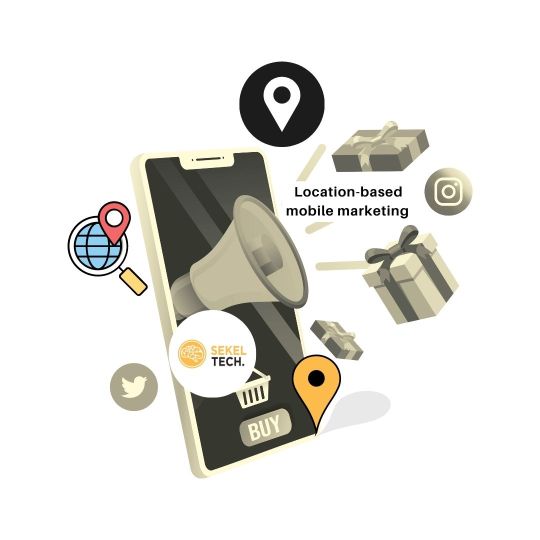
Location-based mobile marketing is a strategy that uses a consumer's real-time location to deliver #PersonalisedContent and ads. This marketing technique has become increasingly popular in recent years, thanks to the widespread use of smartphones and the availability of mobile data. By using #LocationBasedMobileMarketing, businesses can reach consumers in the right place and time, delivering messages that are relevant to their needs and interests.
Benefits One of the main benefits of location-based mobile marketing is that it can increase the relevance and effectiveness of marketing campaigns. By delivering personalized messages to consumers at the right time and place, businesses can improve the chances of converting leads into sales. Location-based marketing can also help businesses to build stronger relationships with their customers by providing them with targeted and personalized content. Another benefit of location-based mobile marketing is that it can improve the overall customer experience. By providing customers with useful and relevant information, such as directions to a nearby store or restaurant, businesses can help to simplify the shopping experience and make it more convenient for customers.
Features Location-based mobile marketing relies on a number of features to deliver personalized content and ads to consumers. One of the most important features is #Geofencing, which allows businesses to set up virtual boundaries around specific locations. When a consumer enters one of these geofenced areas, they may receive a push notification or other type of targeted message. Another key feature of location-based mobile marketing is #BeaconTechnology, which uses small devices placed in physical locations to transmit messages to nearby smartphones. #Beacons can be used to deliver a variety of content, including promotions, product information, and location-specific recommendations.
Trends The use of location-based mobile marketing is expected to continue growing in the coming years, as more businesses recognize its potential for delivering personalized content to consumers. One trend that is likely to emerge is the use of #AugmentedReality (AR) in location-based marketing campaigns. By overlaying digital information onto the real world, AR can provide consumers with a more immersive and interactive experience. Another trend in location-based mobile marketing is the use of #ArtificialIntelligence (AI) and machine learning (ML) to analyze consumer data and deliver more personalized content. By using algorithms to analyze consumer behaviour and preferences, businesses can deliver targeted messages that are more likely to resonate with their target audience.
Take Advantage of Location-Based Mobile Marketing with Sekel Tech By leveraging the technology available through companies like Sekel Tech, businesses can create #TargetedCampaigns that are more likely to resonate with their desired audience. Whether you're looking to drive foot traffic to your store or increase online sales, #ocationBasedMobileMarketing offers a variety of benefits for both small and large businesses alike. So why not take advantage of this innovative approach today? With the right strategy in place, you'll be able to connect with customers in new and exciting ways that leave a lasting impression on them - all while boosting your bottom line!
Sekel Tech offers businesses the opportunity to leverage Location-based mobile marketing through partnership.
Contact us today at! [email protected] https://sekel.tech/
0 notes
Text
What is Beacon technology
In recent years, the beacon technology and the associated service “location-based customer approach” for hypermarkets have been hyped. But in the past two years, beacon technology retail has been quite. So the question arises: what happened to the hype surrounding beacon technology in stationary retail? Jonas Hellweg investigated this question as part of his thesis at the Georg-August-University Goettingen. He summarized the most important findings for Location Insider.
Due to the low level of research literature, that deals with the acceptance of beacon technology retail, it made sense from a scientific perspective to take a closer look at the topic. In particular, research has so far neglected the acceptance of beacon technology from the retailer’s perspective. In my research work, this research gap is addressed and knowledge about the acceptance of the use of beacon technology is gained from the perspective of retailers.
The constantly available Internet, as well as the radio technologies integrated with the devices such as Bluetooth, GPS, and NFC, enable digital interfaces between stationary retail and the end customers. This leads to a change in customer buying behavior (see Singer, M. (2016): Online goes offline in modern retail and Statista: Share of smartphone users in Germany in 2017), to which brick-and-mortar retail is responding with new business models and services. One of these innovative services is the location-based customer approach, also known as “location-based services”, which can be made possible by beacon technology.
Beacon technology retail Benefits

For beacon technology retail, the application must be beneficial for companies. In addition to end-user acceptance, the acceptance of retail is an essential prerequisite for the success of beacon technology.
With regard to the benefits of beacon technology, the “customer loyalty and enthusiasm”, “real-time marketing”, the “perceived usefulness of location-based services” and the “cost-benefit ratio” were identified. According to research literature, beacon technology has a superior cost-benefit ratio compared to alternative technologies.
Three retail companies were interviewed for scientific work. Here, retailers’ expectations of beacon technology could be divided into two target aspects. On the one hand, measurable increases in sales were expected directly in key figures by luring customers into the business through geofencing and by pushing messages to promotional products (hard factors of benefit). On the other hand, it was expected that the orientation needs of the customer would be covered by the offer of “indoor navigation” and thus perceived as an added value. This, in turn, should lead to increased customer satisfaction and loyalty, which, according to the Service Profit Chain, is a driver of customer loyalty (soft factors of benefit). Loyal customers should have a positive impact on company growth and profitability.
Beacon technology retail expectations are not realized
However, beacon technology retailers’ expectations could not be met due to an insufficient number of users. But why did the number of users of location-based services fall short of retailers’ expectations?
According to Davis “Technology Acceptance Models” (TAM), the “perceived usefulness” and the “easy usability” of technology should be given and visible to the user in order to be accepted. However, the providers tried to reach as many customers as possible with the use of location-based advertising (LBA) in order to increase the sales of the provider. The “perceived usefulness” was not apparent to the customers. For example, location-based advertising was sent to customers via push messages, which was perceived as a nuisance. Already with the introduction of the “iBeacon” standard, Apple warned of the danger of bothering customers with too many push messages in the form of advertising.
Another challenge in accepting location-based advertising is ensuring an accepted upper limit for advertising contacts. It is also critical to question when the customer has a need for orientation. After all, the “perceptible benefit” for indoor navigation is only apparent to customers if they have a need for it. In addition, the accuracy of the location determination through beacon technology poses a challenge for user acceptance.
There is disagreement among the experts surveyed about the evaluation of the costs with regard to the acquisition, introduction, and maintenance of the beacon technology retail. One of the interviewees perceived the costs of beacon technology retail as too high for the benefits provided. In general, the number of users is relevant for the calculation of the cost-benefit ratio. Less than expected use of beacon technology drives up the cost per user.
The fulfillment or non-fulfillment of the expected benefits for the beacon technology on the part of the retailers, in addition to the cost aspect and the technical implementation, has a direct impact on the acceptance of the beacon technology retail.
Risks:
One risk of using location-based services is that the customer perceives no benefit for the service offered. If one or more relevant factors of the use of a location-based service (LBS) are not met, the user will not perceive any benefit. As a result, they will not accept the service.
The “location-based advertising” application serves as an example of this since no benefit is perceptible to the customer.
Thus, the benefit of the provider is missed because his advertising messages do not reach the customers. The offer of “indoor navigation” only provides a benefit if there is a need for this on the part of the user. The consequences of a drop in the number of users are dramatically rising contact costs. This harbors the risk of higher investment risk. In addition, other possible uses cannot be realized as a result (for example, “Analytics”). Another risk for the benefit of beacon technology can be high failure rates, maintenance requirements and inaccuracy of location localization.
Opportunities
The beacon technology retail offers various possible uses of location-based services. It should be noted that the service provides the user with a noticeable benefit. By offering location-based services, customer satisfaction and thus customer loyalty can be increased. According to the Service Profit Chain by Heskett et al. this should lead to an increase in the company’s sales growth.
Let’s take an example of the orientation needs of customers at the airport.
In this case, the needs of the user can be met by offering “indoor navigation”. The service fulfills all relevant benefit factors in order to deliver a perceptible benefit to the customer. This means that customers can accept the technology and plan the contact costs with a constant number of users. In addition to the main benefit, other location-based services such as “Analytics” can be used. Another opportunity is the possibility of reducing costs in facility management, in which the vehicle fleet and machines can be localized and planned more efficiently.
Action recommended
I recommend a careful analysis of the use of location-based services on the part of the customers.
The benefit is the basic requirement for the acceptance of beacon technology retail. Acceptance can arise if the predefined expectations of the technology are met. The perceived benefit of beacon technology plays a critical role.
Retailers that focused on the hard benefits were unable to meet the expectations for technology adoption. Whereas tracking the soft factors of benefit led to expectations being met.
In the age of the “Internet of Things”, location-based services will certainly be discussed even further in the future. It remains to be seen whether beacon technology will remain the technical standard for implementing “indoor” location-based services.
The task in future research activities is to analyze the acceptance of an upper limit for advertising contacts via location-based advertising (frequency cap) and to design concrete solutions.
There is also the question of whether the possible uses of location-based services should be advertised more in order to illustrate the added value of the service to potential users.
This article is from https://www.mokosmart.com/beacon-technology-retail/
If you are looking for beacon technology solution and beacon devices, then contact MOKOSmart!
0 notes
Text
All There’s to Know About Beacon Technology for Mobile Apps, http://ift.tt/2BtNZha #BeaconTechnology #MobileApps #iBeacon
All There’s to Know About Beacon Technology for Mobile Apps, http://ift.tt/2ABGktD; #BeaconTechnology #MobileApps #iBeacon
0 notes


